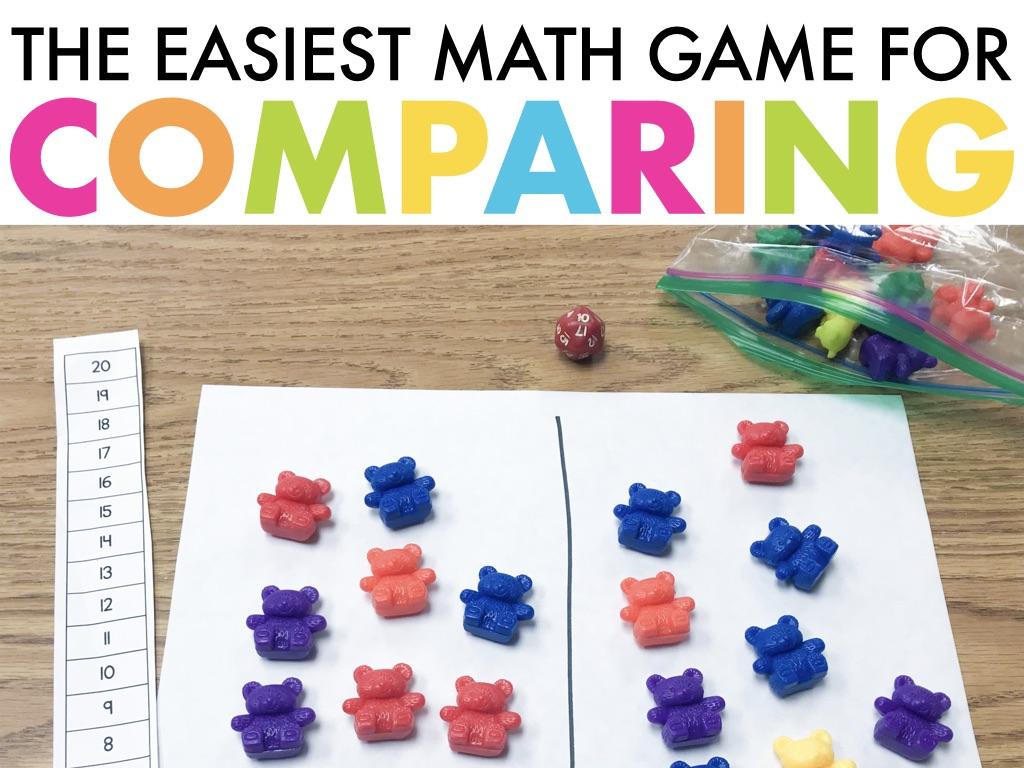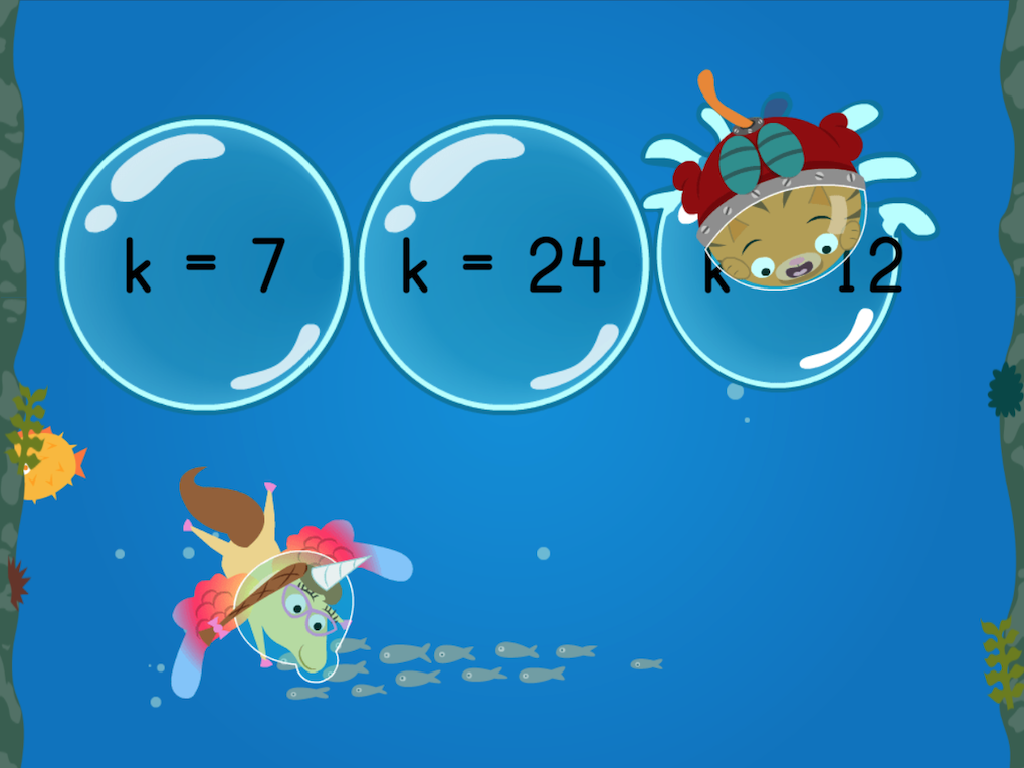Division Facts To 10
Subject: Math
Grade: Fourth grade
Topic: Division
Please LOG IN to download the presentation. Access is available to registered users only.
View More Content
Welcome to Division: Mastering Facts to 10!
– Discovering division: Sharing equally
– Division is like sharing cookies evenly among friends.
– Division facts up to 10
– Memorize simple division: 10 ÷ 2 = 5, 9 ÷ 3 = 3, etc.
– Why division matters
– It helps in everyday tasks like splitting snacks.
– Practice makes perfect
– We’ll do fun activities to learn these facts!
|
This slide introduces students to the concept of division as a form of equal sharing, setting the stage for understanding division facts up to 10. Emphasize that division is a fundamental math skill that they will use in many aspects of daily life, such as dividing up food, sharing toys, or splitting tasks. Encourage students to see division as a useful tool rather than a challenge. Provide examples and plan engaging activities that will help them memorize division facts, such as dividing objects into equal groups or using flashcards. The goal is to build a strong foundation in division that will support their future math learning.
Understanding Division
– Division as sharing equally
– Imagine splitting 10 cookies with 2 friends evenly
– Making equal groups
– How many groups can you make with 10 stars and 2 circles?
– Equal items in each group
– If you have 9 apples, how many does each get if you share with 3 friends?
– Division facts up to 10
– Practice dividing numbers 1 through 10 into equal parts
|
This slide introduces the concept of division to fourth graders by relating it to the familiar activity of sharing items equally among friends. Start by explaining division as a way to distribute items evenly and ensure that each group has the same number of items. Use tangible examples like cookies or stars to illustrate the point. Encourage students to think of division as a fair sharing method. Introduce division facts up to 10, which are basic division problems that they should memorize. These facts will serve as a foundation for more complex division problems in the future. During the lesson, engage the students with hands-on activities where they can physically group items to reinforce the concept.
Division Vocabulary
– Dividend: Number being divided
– If we have 10 apples and make 2 groups, 10 is the dividend.
– Divisor: Number you divide by
– Divisor is the 2, as we’re making 2 groups of apples.
– Quotient: The division result
– Quotient is 5, since each group has 5 apples.
– Understanding division terms
|
This slide introduces students to the basic vocabulary of division, which is essential for understanding and solving division problems. The dividend is the total amount you want to divide up, the divisor is the number of groups you are dividing into, and the quotient is how many items are in each group after dividing. It’s like sharing equally among friends. To help students grasp these concepts, use relatable examples such as dividing snacks or toys. Encourage them to think of their own examples and share with the class to reinforce their understanding.
Mastering Division Facts to 10
– Importance of memorizing division facts
– Knowing division facts speeds up problem-solving
– Exploring examples as a class
– We’ll solve problems like 20 ÷ 5 and 9 ÷ 3 together
– Engaging in guided practice
– I’ll help you through some problems step by step
– Encouragement for independent practice
|
This slide is aimed at reinforcing the importance of memorizing division facts up to 10 to enhance the students’ ability to solve division problems quickly and efficiently. Start by discussing why it’s beneficial to have these facts readily available in memory. Then, work through some examples as a class to demonstrate common division facts. Follow this with guided practice, where you’ll help students work through problems, ensuring they understand the process. Finally, encourage students to practice independently to solidify their understanding and recall of division facts. Provide additional worksheets for practice and consider using games or timed activities to make the learning process fun and engaging.
Let’s Practice Division!
– Example: 20 ÷ 5 = ?
– Divide 20 by 5 to find the answer
– Groups of 5 in 20
– How many times does 5 fit into 20?
– Step-by-step solution
– Start with 20 and take away groups of 5
– Practice makes perfect
|
This slide is designed to help students practice the concept of division by using a relatable example. Start by presenting the problem 20 ÷ 5 and ask the class how many groups of 5 can be made out of 20. Walk them through the process step by step: start with 20, subtract 5, and count how many times this is done until reaching 0. This exercise will reinforce their understanding of division as making equal groups. Encourage students to practice with different numbers to gain confidence. Remember to praise their effort and progress to foster a positive learning environment.
Division Tricks: Mastering Division Facts
– Use multiplication for division
– If 4 x 5 = 20, then 20 ÷ 5 = 4
– Skip count to find quotients
– Count by fives to divide 20 by 5
– Division is multiplication’s opposite
– Understanding this helps solve division problems
|
This slide introduces students to helpful strategies for mastering division facts up to 10. By using multiplication, students can find division answers more easily, as they are simply reversing the operation. For example, if they know that 4 multiplied by 5 equals 20, then dividing 20 by 5 must equal 4. Skip counting is another useful technique; if students can count by fives, they can quickly find that 20 divided by 5 equals 4 by counting ‘5, 10, 15, 20’ and seeing it takes 4 counts. Emphasize that division is the opposite of multiplication, which can be a powerful way to check their work. Encourage students to practice these tricks with different numbers to become more confident in their division skills.
Group Activity: Division Bingo
– Receive your Division Bingo card
– Solve division problems on the card
– Use division facts up to 10 to solve
– Aim for five correct answers in a row
– Shout ‘Bingo!’ when you get five in a row
– We’ll verify your answers together
|
This interactive group activity is designed to help students practice and reinforce their understanding of division facts up to 10. Each student will receive a Bingo card filled with answers to various division problems. They must solve division problems separately to find the corresponding answers on their Bingo card. The goal is to get five correct answers in a row, either horizontally, vertically, or diagonally. When a student achieves this, they shout ‘Bingo!’ and the class will pause to check their answers. This is a fun way to encourage quick recall of division facts and to foster a bit of healthy competition. For the teacher: Prepare Bingo cards in advance, ensure each card has a unique combination of answers, and have a list of division problems ready for students to solve. Consider preparing small rewards for winners to motivate participation.
Homework and Wrap-Up: Division Mastery
– Practice with Homework Sheet
– Review Tricks and Tips
– Recall shortcuts like ‘5 into 20 equals 4’
– Get ready for next class
– Keep practicing division facts!
– Try dividing objects at home for fun
|
As we conclude today’s lesson on division facts up to 10, students are expected to complete their homework sheets to reinforce their understanding. Remind them to use the tricks and tips discussed in class, such as using multiplication facts to help with division or recognizing patterns in division tables. Encourage them to be prepared for the next class where we will delve deeper into division concepts. Additionally, suggest that they practice by dividing items around the house, like sharing snacks equally with family members, to make learning more interactive and enjoyable.






